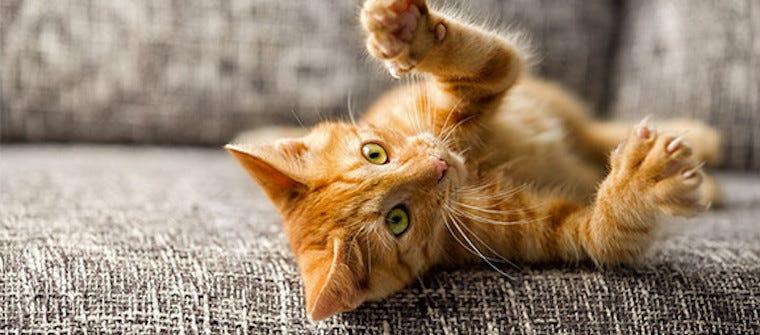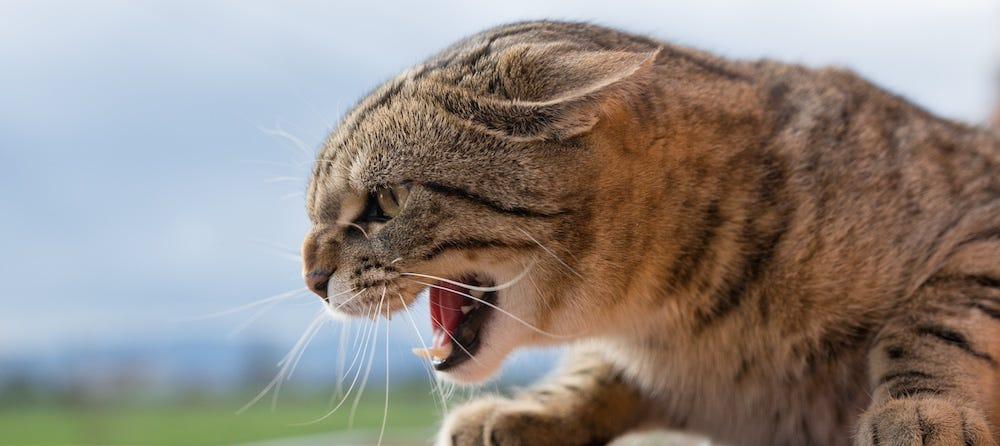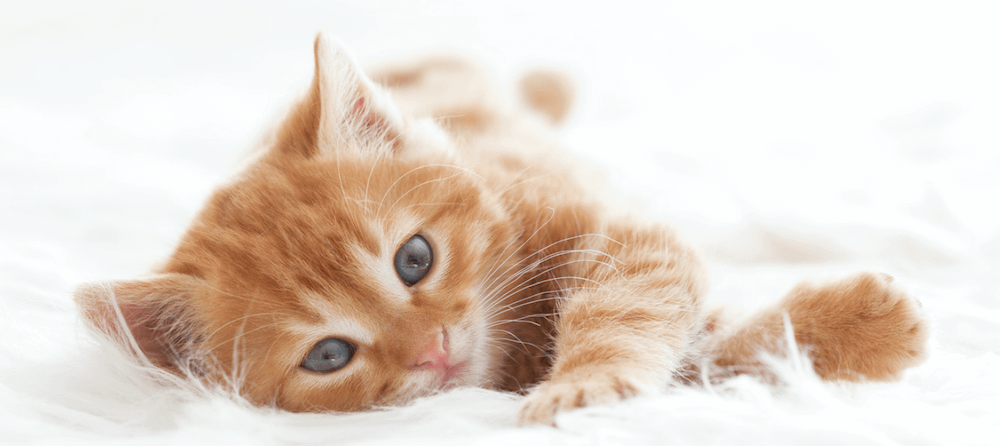Today is International Left-Handers Day! Of course it got us wondering: Are cats right- or left-pawed? Or, are they “ambi-pawed?”
We know every kitty is unique, so it stands to reason that each one is uniquely paw-dominant. But how does the feline world stack up when compared with a society of largely right-handed humans?
Well, there’s research to tell you just that. The January 2018 issue of Animal Behavior released the results of a study that set out to answer, are cats right- or left-pawed? The study of “lateral bias” on 44 cats tested each feline’s paw preference for food-reaching, stepping down, and stepping over objects.
Battle of the sexes
It turns out there’s no dominant lateral bias (read: paw preference) among cats like there is among people. However, the cats were more likely to favor one paw over the other rather than be ambilateral (or use both paws equally).
Male cats are significantly more likely to use the left paw and females are significantly more likely to use the right paw.
Where the study got interesting was with the revelation that male cats were significantly more likely to use the left paw and females significantly more likely to use the right. Age and breed had no impact on lateral bias.
The study pointed out that the “underlying differences in the neural architecture” among male and female animals have been observed before, and not only in cats—in dogs, horses, and snub-nosed monkeys.
Lefty stress
Why does this matter? Animal Behaviour Centre Director Deborah Wells explained to NPR that “from a pet owner’s perspective, it might be useful to know if an animal is left- or right-limb dominant, as it may help them gauge how vulnerable that individual is to stressful situations, e.g. captive housing, trips to the vet, fireworks, etc.”
Left-pawed and ambilateral animals tend to show stronger fear responses.
Left-pawed animals, which tend to be right-hemisphere dominant, and ambilateral animals, which may have poorer processing between the two hemispheres, show stronger fear responses. This makes them more flighty and vulnerable to stress than right-pawed animals. For example, studies have shown that left-pawed dogs are more likely to act aggressively towards strangers, or have a more “pessimistic” outlook in general.
If you know your pet’s preference, you may be able to better understand (and sympathize with) how the animal reacts in stressful situations.
Is your cat right- or left-pawed? Here’s how to tell
All that said, you shouldn’t just assume that your female kitty prefers her right paw or your male kitty his left. There are a variety of tactics you can try to test your pet’s paw preference (or lack thereof).
Observe
- Which paw does your cat first step down onto the stairs with?
- Which paw does your cat first place into the litter box (or Litter-Robot!)?
- If your cat likes to scoop up water with her paw, which one does she use?
- If your cat wants to get inside the house or into a room, which paw does she use to scratch at the door?
Interact
- Put a treat under a bowl. Which paw does your cat use to move it?
- Put a treat under the couch, just out of reach. Which paw does your cat use to try to get it out?
- Dangle a toy above your cat’s head. Which paw does she use to bat at it?
- If you’ve taught your cat to shake (this one is more applicable to dogs), which paw does she offer you?
Of course if you want to be as thorough as a scientist, you’ll need to test these same tactics dozens (if not hundreds) of times before you can proclaim your cat’s lateral bias.
Recommendations








